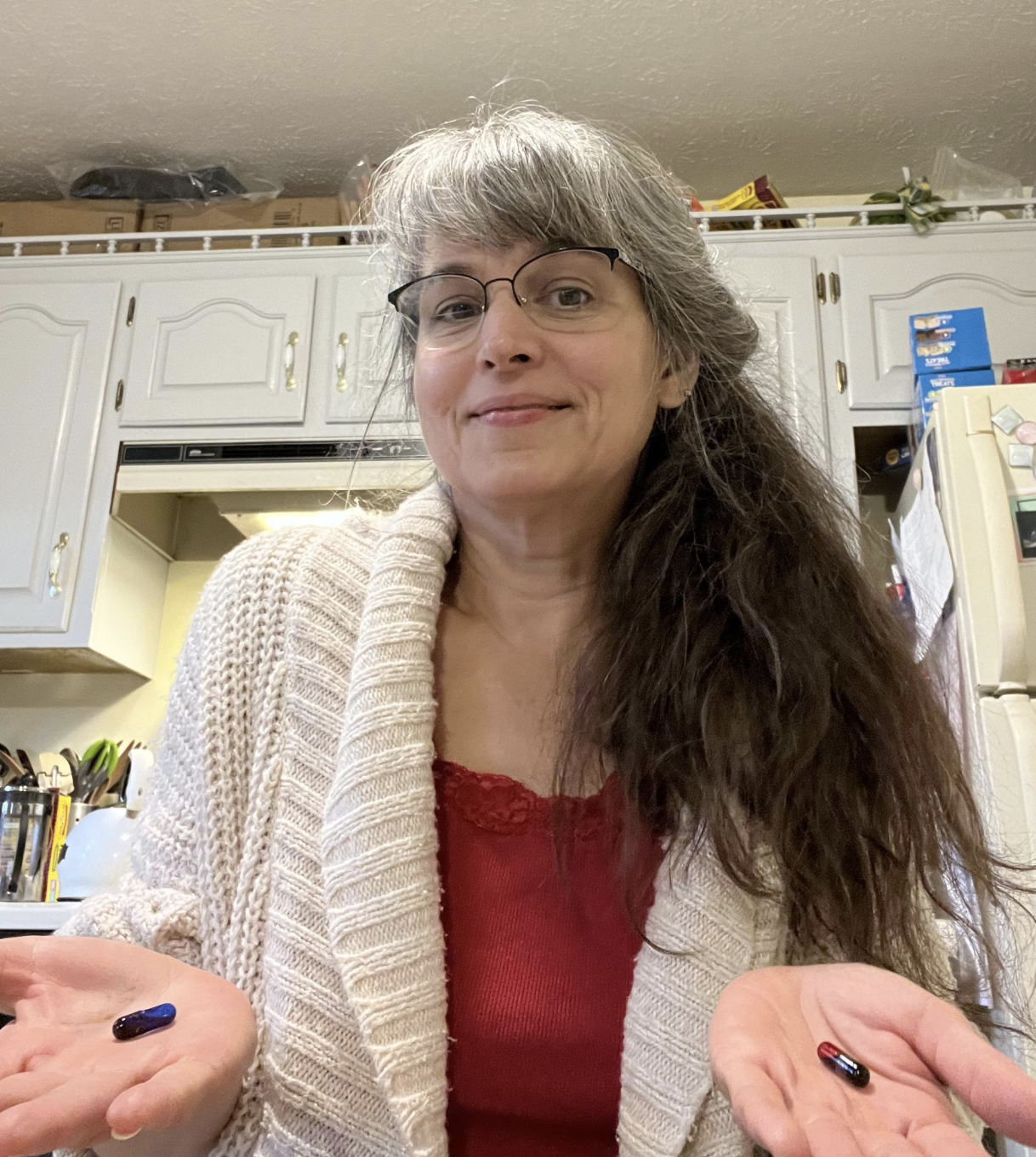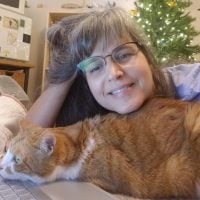
Everything is connected.
I know this—not with every fiber of my being, but that’s a good goal.
I love the idea that everything is connected, but I question how much it applies to me. Impactful experiences of disconnection come to mind.
Hmm, putting that in writing, it seems ridiculous that I would somehow be exempt from a universal truth.
(Do you see what just happened? I almost missed it, focusing on what I think is missing. I’ve sat down to express some things I hope will be helpful to share, and I’ve already self-corrected a faulty thought pattern of my own. Thanks!)
That happens to me a lot. It’s like my convoluted spinoff on Ram Dass’ idea that we’re all just walking each other home. I get lonely walking myself home, so I try to help someone else, and my own walk gets easier. Regardless whether my efforts to help others ever hit the mark, good things often transpire for me when I try.
A simple example comes to mind. When COVID was new and everything was shutting down, I wanted to help my kids with their anxiety, and latched onto a simple comforting practice. Since then, it’s become clear that the highest anxiety in my home was my own. My son has reminisced, in a pining kind of way, about how carefree he felt then, not having to go to school and playing Fortnite with his friends.
The practice was a loving-kindness meditation. I memorized the words in Daniel Siegel’s book The Mindful Therapist to recite them to my son while I was tucking him into bed:
“May I be happy and live with a joyful heart. May I be healthy and have a body that gives me energy. May I be safe and protected from harm. May I live with the ease that comes from well-being.”
I repeat the process for a friend, for someone I have conflict with, for all living beings, and again for myself. Maybe my son didn’t need it, but it sure soothed me.
Einstein once said, “A human being is a part of a whole called the ‘universe,’ a part limited in time and space. He experiences himself, his thoughts and feelings, as something separated from the rest—a kind of optical delusion of his consciousness.” Looking up the quote to share with you, I found there was more to it than I knew. More benefits of our interconnection. Thank you again!
Feel free to substitute she or any preferred pronoun in the quote. Then please poke holes all through that delusion separately (wink wink) in your own life. To flip the Matrix metaphor around, it’s not a blue pill that keeps us comfortable but stuck in our illusions, and a red bitter pill of truth that will freak us out but set us free.
No, all we have to do is believe how interconnected we really are—how much we each are a part of the whole, not apart from it.
I find this exciting. Most of my life, I’ve been taking a blue pill that tells me I’m a little weird or “terminally unique,” as they say in 12-step rooms. That perception has persisted like an unnecessary nemesis. If Einstein says it’s an optical delusion, who am I to argue with a genius?
I just need to admit I’ve been wrong, and believe I belong in the web of life. That’s easier said than done. My circle is pretty small. I’m self-employed, so I have no colleagues. I’ve been divorced for years and have dated a lot, but haven’t met someone with the right chemistry or quirkiness to become a partner. (When I do, I’ll be sure to share all about it on Elephant Journal.)
I’m not totally isolated, though. I do have two kids—one in college, one still home. I have three cats, friends and family I care about, and meaningful work. Sometimes that glass looks half full and feels peaceful. But the half empty voice says I’m getting more eccentric the longer I’m alone, and by now there are way more than six degrees of separation between me and anyone else.
One thing I have going for me is that I still want connection. I allow myself to keep wanting it, as silly as that might seem. I remember times when a felt sense of belonging was more palpable. Perhaps it’s still real, even when I don’t feel it.
I like my alone time, though, and I enjoy silence. When I let the empty spaces in my life breathe, like an uncorked bottle of wine, I do detect fullness in there.
Meditation practitioners talk about a spaciousness always available inside. Siegel calls it the plane of possibility, and suggests it corresponds to what physicists call the quantum vacuum. Maybe it’s what religious people call God. Even if I cannot sense it directly or often, the search is worth it and sometimes yields subtle magical gifts.
Siegel teaches a “Wheel of Awareness” practice I enjoy. The wheel metaphor is a nice way to guide the focus of our attention from inside (the hub) to various sections on the rim: sensory data, interior bodily signals, mental activities, and (my favorite) our interconnected relational sense.
I want to share about another practice that has been particularly helpful for me to feel more connected. It comes out of the HeartMath Institute.
First, a disclaimer. While I have no formal training in it, I’ve gratefully been experiencing it primarily with my heart not my head, after a friend told me about a local yoga teacher who was offering free guided experiences weekly via Zoom to “Heart Start Your Week.” We were strangers but he kindly accepted my request to join his Facebook group, and I’ve been practicing regularly for a month or so now.
I hope I can do justice to the beauty of it with this summary of the process, which only takes 10 or 15 minutes of clock time. I focus on my breath moving through my heart area, I let my attention settle on something positive, I send that good energy out, and I let it come back to me. The focus could be an experience of compassion, an achievement, anything positive. I’m struck with the simplicity of the moments I spontaneously pick, and how little time and attention I would otherwise be devoting to those sweet things.
The practice is, of course, intended to be experienced directly for yourself. But I’d love to share a taste of what I’ve enjoyed so much about it. You might then be more inclined to want to try it.
My son had Covid a couple weeks ago. It started with a sore throat. He never had a fever, but he sneezed a lot. The first clue that it might be more than a cold or allergies was when he didn’t feel well enough to run in a cross-country meet. Nurturing him through being sick was a natural choice for my HeartMath practice.
The compassionate moment I chose was one when he woke up feeling “weird” and scared, so I cuddled with him until he fell back to sleep. I imagined that comforting, spooning hug going out to sick scared people everywhere and then coming back.
My son was feeling better and testing negative in no time. Then I tested positive and started feeling weird and scared myself—and alone. My son was back at his dad’s house. The visceral memory kicked in of the comforting energy I’d sent out coming back to me, energy I hadn’t a clue at the time I’d need too. Magic.
Another moment I chose to meditate on one morning was from a story, The Boy, the Mole, the Fox and the Horse. It’s a children’s book, a parable full of heart-opening nuggets for anyone feeling lost or alone. (It’s also now an animated film on Apple TV.) I stumbled on the title while researching care package ideas for my daughter, who is in her first year of college. I previewed the film first then sent her the book. I don’t even know if she’s read it yet.
Here’s the excerpt that touched me:
“Sometimes I want to say I love you all,” said the mole, “but I find it difficult.”
“Do you?” said the boy.
“Yes, so I say something like, I’m glad we are all here.”
“OK,” said the boy.
“I’m glad we are all here,” said the mole.
“We are so glad you are here too.”
Amplifying that sentiment by sending it out into the world and letting it come back to me was overwhelming, in the best way.
So much love hiding in so many shy disguises. I thought of Wesley saying “as you wish” in The Princess Bride. I thought of Louie Armstrong singing “I see friends shaking hands, saying how do you do.” I thought of the neighbor in the TV series “Shrinking,” who gives out shiny rocks but only to people she really cares about.
The possibilities are endless. And if you consider whatever you send out, however far it travels, coming back around, they might even be infinite.
AUTHOR: KATHRYN KURDT
IMAGE: ALENA SHEKHOVTCOVA/PEXELS
EDITOR-AT-LARGE: JANIS STANTON
EDITOR: NICOLE CAMERON

This account does not have permission to comment on Elephant Journal.
Contact support with questions.